8 Classic Wine and Cheese Pairings You Need at Your Soiree
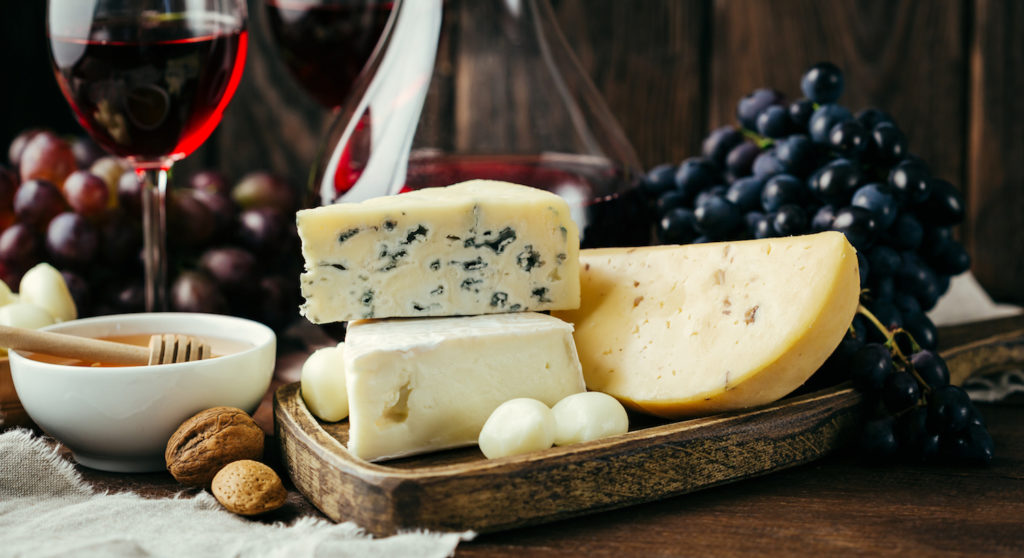
A stunning cheese board is one of the most classic party appetizers ever to exist. Done well, it’s stunning, classy, and delicious. But there is no denying that choosing which wines and which cheeses can be confusing and overwhelming.
My first wine and cheese party took me weeks to plan. And I was lucky enough to live next door to both a liquor store and a cheese shop! I stopped in every day on the way home asking for different suggestions.
You don’t have to stress like that. Fortunately, there are a few classic wine and cheese pairings that will always be a hit.
Looking for dessert pairings? Try Scotch and Dessert or Port Wine and Dessert.
Looking for more pairings? Red Wine and Meat or White Wine and Fish are two solid options! You can also learn how to pair Fall Dishes with Fall Wines here.
General Rules
- Pair regions together: Italian cheese with Italian wine, French with French, etc.
- Funky Cheese? Sweeter wine.
- Intense cheese needs intense wine
- Delicate cheese needs delicate wine
- Pair high fat cheese with tannic wines
- Creamy cheeses work well with bubbles
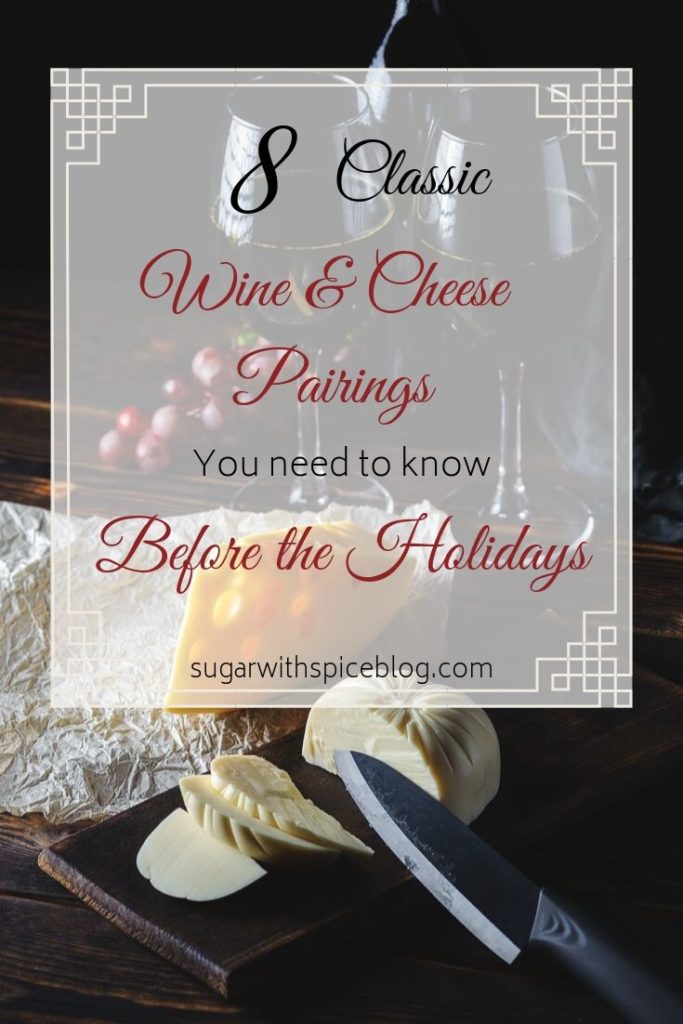
Types of Cheese
When you are planning a cheese board, it’s a good idea to keep in mind the different types of cheeses you can include. After all, they have different properties, textures, and tastes. A really good cheese board has a smattering of several options.
Fresh (Soft)
Fresh cheese is the softest of all the cheese options. They are consumed young and unaged, Mozzarella being the most common example. You’ll never find a rind on these and they tend to taste mild and creamy. But you will find a huge variety since they are made with all three types of milk. You also have the choice between crumbly or creamy.
Examples: Burrata, Goat Cheese (Chevre), Feta, Ricotta, Farmer’s Cheese, Neufchatel
Bloomy (Soft)
These cheeses are technically in the “soft” category as well. But we’ll give them a separate heading because they do have an exterior mold that forms a semi-soft white rind. The cheese interior has a soft, creamy, and rich character. These can be eaten with the rind (which adds a funky character) or spread out on bread.
Exampes: Brie, Camembert, Chaource, Buche de Chevre
Stinky or Washed-Rind (Soft)
That bad rap cheese gets for being smelly? It comes from these washed-rind cheeses. In these cases the cheese is periodically washed with a salt-water brine to soften the interior and add flavor. These brines can include other liquids like wine or beer as well for added flavors. The rind washing creates a moist, sticky exterior and encourages the growth of certain helpful bacteria. (So blame both the smell and the yummy taste on these little critters!)
Example: Fontina, Muenster, Taleggio, Limburger
Hard
Hard cheeses are the ones you grate or shave. They tend to be very nutty and crumbly. These cheeses have often been cut and cooked before extended aging. They are drier and more crumbly.
Examples: Parmesan, Romano, Asiago, Aged Gouda
Semi-Soft and Firm
The majority of cheeses actually fall into this in-between category. And you’ll note they often overlap with other categories as well! (For example Morbier also counts as a Stinky cheese.) Semi-soft has the largest variety of cheese under its umbrella. They a little more firm than most soft cheeses, but softer than the hard long-aged cheeses. Firm cheese can be cut and then cooked, or curdled. Then it is pressed in layers during aging to remove whey. Some hard cheeses will have a softer variety in the firm category, like young Gouda.
Semi-Soft Examples: Havarti, Young Gouda, Young Cheddar, Morbier
Firm Examples: Cheddar, Colby, Provolone, Manchego
Blue
These cheeses are usually fairly identifiable by the veins and pockets of blue-green mold. (Most cheeses are ripened using bacteria, but blue cheeses are ripened with these molds!) Depending on the type of mold used they have a very strong flavor and sometimes a strong odor as well.
Example: Gorgonzola, Roquefort, Stilton, Danish Blue
Cow’s Milks vs Sheep’s Milk vs Goat’s Milk Cheese
Cheese, as I’m sure most of you know, is a dairy product. (There are non-dairy and vegan cheeses, but this article is focusing on dairy.) Cheese is made from milk, cultures, and coagulant/rennet. But of course that means you can have many different types of cheese based on which milk you use. All of these milks can make a variety of types of cheese, but their different flavor and fat content has a profound effect.
- Cow’s Milk – the classic cheese milk. Most Americans will be able to identify these cheeses simply because they don’t taste like a barnyard. They are mild at heart and can be shaped by all sorts of methods into entirely new flavors.
- Sheep’s Milk – double the fat content and double to protein, so you end up with a denser cheese. Sheep’s milk is also homogenized so the fat is in smaller globules and more easily mixed. They tend to be sweeter and a bit tangy. A final note, sheep’s milk contains the oil lanolin, which contributes to that animal/barnyard/rustic flavor.
- Goat’s Milk – same fat and protein as cow’s milk but it is homogenized, and somewhat basic (rather than acidic) so it’s lighter. Goat’s milk cheese is usually little buttery and lemony. The longer they age, the less pungent and animal-y they will be. You’ll find milder and nuttier flavors in older cheeses. (There is less lactose in goat’s milk, which means some people with lactose intolerance can actually consume goat milk and goat milk cheese. Be sure to speak with your doctor before trying!)
Types of Wine
Part two of our pairing: wine! There are so many wine options out there, it’s impossible to try them all in one lifetime. But you should have a basic understanding of wine before trying to pair with a cheese.
Both red and white wines can be incredibly complex, so don’t take this as the definitive guide to all wine types. Instead, we’re looking at wine through the lense of cheese. We’ll be focusing on the simplest types and elements necessary to make a good pairing. Don’t stress or get confused, they’re very simple. (And if you’re looking for more in depth wines analysis, you’ll want to check out some of the links below.)
Red – Medium to Full Body and Tannic
One of the main elements to be aware of in red wine are tannins. Tannins are compounds found in plant matter like leaves and stems and seeds that provide structure to wine. Tannin content tends to be higher in wines with a black-fruit flavor. Which makes these wines heavier and more weighty. Tannins also leave behind a velvety and bitter mouthfeel. But because of this, they are incredibly helpful at cutting through fatty foods like…cheese!
Examples: Cabernet Sauvignon, Syrah/Shiraz, Petite Syrah, Malbec
Red – Light-Medium Body and Fruity
Red wines that are light on tannins are usually described as “fruity.” They are full of red-fruit flavors and are a little more acidic. You also won’t get that heavy thick texture that coats your teeth and tongue when you sip on these. Because of that lightness and fruitiness, light-bodied wines are easier to pair! There are a few wines like Merlot, Zinfandel, and Rhone Blends that are medium, perfectly balanced between tannic and light.
Examples: Gamay, Pinot Noir, Beaujoulis, Cabernet Franc
White – Dry
Just as red wines can be divided, there are a few broad categories for white wines as well. In most cases you’ll want to choose between dry or sweet. While there are further designations like boldness, buttery texture, zest, and green notes, let’s focus on dry and “off-dry.”
Dry wines have had all of the sugar from their grapes fully fermented into alcohol. They tend to be sharper, more acidic, and more citrusy. Flavors usually include apples, lemons, limes, herbs, minerals, flowers, and the occasional tropical note. Perfect for cutting through extra cream!
Examples: Chardonnay, Pinot Grigio, Sauvignon Blanc, Grüner Vetliner
White – Off-dry
Off-dry is what happens when some portion of the sugar molecules are not fully fermented into alcohol. These wines will have a touch more sweetness, though they will still have strong notes of acidity. Flavors tend to include stone fruits, tropical fruits, perfume, winter fruits, dried fruits, and honey.
Examples: Late Harvest Riesling, Gewurztraminer, Sauternes, Madeira
Dessert Wine
There is some overlap between dessert wines and off-dry wines. For example an exceptional late-harvest riesling or gewurztraminer makes an excellent dessert wine as well. In general, these wines are particularly sweet and high in sugar content. They taste of honey, nuts, rich fruits, and jams. Some are complex enough to be served alone for dessert, while others are best paired with chocolate, sweets, and pies. Surprisingly, they pair excellently with funkier cheeses.
Examples: Ice Wine, Port, Sherry
How to make a cheese board
It is wise to always include a smattering of cheeses. Don’t worry about buying a full pound of each type, but have at least one ounce of each cheese per person. You want different textures and flavors (unless you are going for a specific theme or taste test!) So for a party of 5 to 6 people, try for a selection including:
- One Creamy
- One Hard
- One Semi-soft or Firm
- One Sheep/Goat
- One Blue
Of course you can adjust amounts and types based on the number of people and your budget.
Add some extras like fruit spreads, nuts, pickles, olives, even fresh fruit. (You can also choose a few cured meats as well, but that’s a whole other set of pairing notes.) But don’t pick too many additional sides. You don’t want to over crowd your cheese plate. Stick to 2 per cheese, max.
The cheese should be the star, so make sure it is attractively laid out. And do not crowd it! You want people to be able to slice a piece of cheese without bumping into anything. Place your extras in the gaps between to suggest certain pairings. And serve bread or crackers on the side to give you more room.
Make sure each cheese has its own knife as well. Mixing cheese flavors won’t spark joy for anyone.
The Pairings
Here are a few common wines and cheeses that pair well together! You can find them in most shops and most of your guests will be familiar with at least a few. If you want a hit cheese plate, you can’t go wrong with these classic pairings!
Pinot Noir and Gruyere
A lighter-bodied wine like Pinot Noir pairs perfectly with a nutty cheese like Gruyere. It’s delicate enough to not overwhelm the subtle notes of Gruyere and the earthy flavors in the wine nicely complement the earthy cheese. (Remember, like with like!)
Cabernet Sauvignon and Gouda
Aged gouda is very strong and full of delicious nutty flavors, but it needs a wine with high tannins to cut through those flavors. Cabernet Sauvignon is one of the best choices. It pairs excellently with most hard cheeses because its full body reduces the thick aged flavors.
Merlot and Parmesan
Merlot is a dry red wine, and though it is a little fruitier than a cabernet sauvignon, it will still pair wonderfully with the rich salts and nuts in Parmesan. Parmesan is a hard aged cheese, so it needs something that shines through its strong flavors.
Pinot Grigio and Fontina
Pinot Grigio pairs with spicy foods like Mexican or Thai, so it can also handle a slightly stinky cheese. Fontina is decidedly on the lighter side of wash-rind cheeses, but its hard rind keeps it less smelly and oozy. The acidity in Pinot Grigio will also cut through the buttery texture of Fontina for an excellent pairing.
Late Harvest Riesling and Roquefort Blue
Blue cheeses shine brightest when paired with sweet wines. The sweetness of Riesling is the perfect complement to the sharp tangy bite of Roquefort. Rieslings pair well with crumbly cheeses and Roquefort fits that bill. But the strong fruit of Riesling also keeps the pungent flavors and cream of Roquefort from becoming too rich and overwhelming. A salty-sweet combination, it may surprise your guests, but they’ll love it! (Remember, like with unlike!)
Chardonnay and Mild Cheddar
The buttery texture of Chardonnay typically pairs with creamy cheeses. But use contrast here in pairing a salty yet buttery cheese with a buttery wine. The sharpness of a mild cheddar will actually cut some of the heavier butter notes of Chardonnay while still complimenting its own butter characteristics.
Sauvignon Blanc and Goat Cheese
Possibly the most classic pairing on this list! Sauvignon Blanc is a traditionally green and herbaceous wine. It also has a good deal of acid and tang, which pairs it perfectly with tangy yet creamy goat cheese. The tang complements and also cuts through extra rich creaminess. And the distinctive flavors of Sauvignon Blanc can help disguise some of the more “rustic” flavors. (If you have a honeyed goat cheese, go for a more tropical flavored Sauvignon Blanc as well!)
Champagne and Camembert (or Brie)
All that thick cream in Brie or Camembert can overwhelm your palate after too many tastes. Cut through it with some charming and peppy bubbles! The fruity flavors will also add some additional crisp and toasty notes to all that fat.
If you’re building your first cheese board for your first soiree, you can’t go wrong with these options. But if you’re looking for something a little more daring experiment around! There are definitely worse adventures to explore. Keep in mind the general rules above and test out a few new combinations.


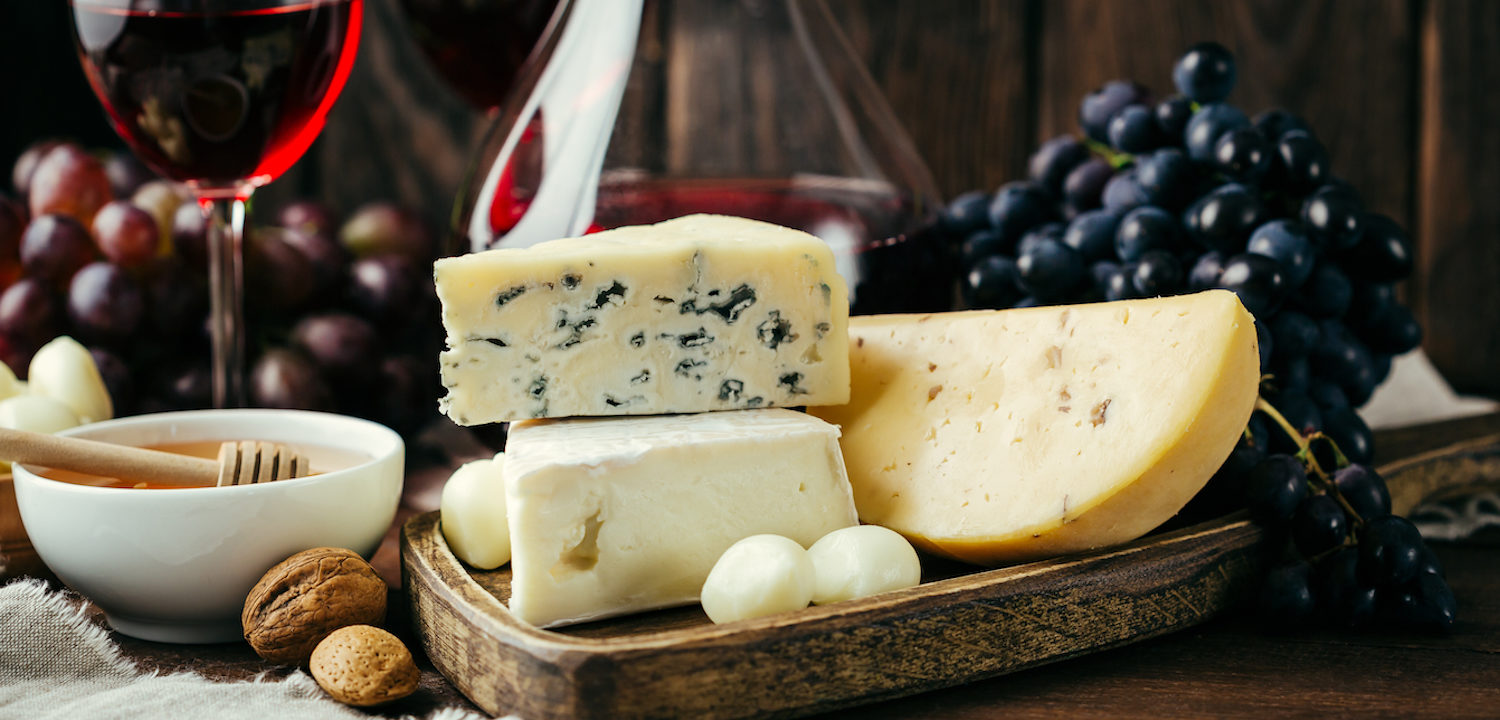
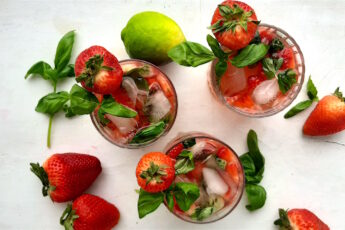
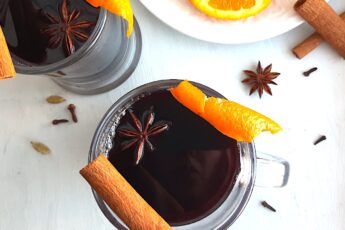
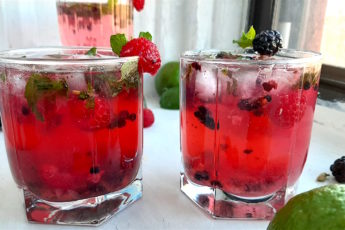




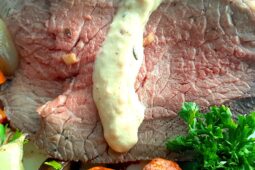
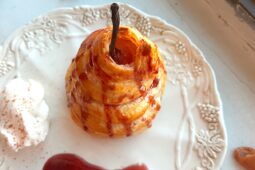
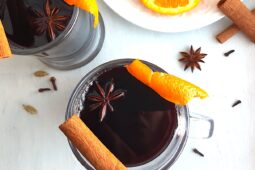
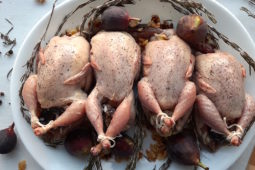
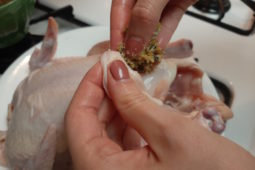
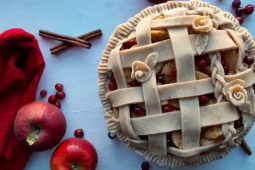
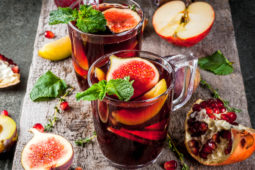
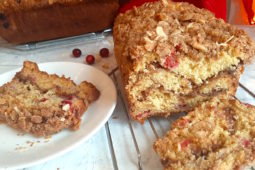
Leave a Comment